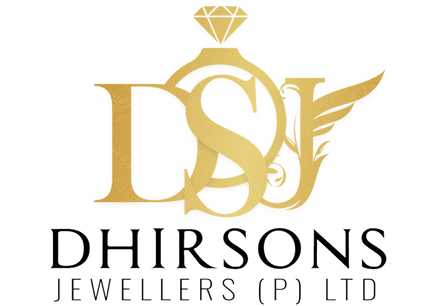How To Calculate Gold Price For Jewelry

Gold jewelry has always been a symbol of elegance, beauty, and wealth. Whether it's a dainty necklace, a pair of earrings, or an ornate bracelet, gold jewelry holds a special place in our hearts. However, have you ever wondered how the price of gold jewelry is calculated? It's not as simple as just adding up the weight of the gold and multiplying it by the current market price.
Various factors come into play when determining the value of gold jewelry. In this blog, we will delve into the intricacies of calculating the gold price for jewelry, understanding the purity of gold, weighing the gold accurately, and considering additional factors that impact the final price. So, let's dive in and unravel the mystery behind the calculation of gold price for jewelry.
How to calculate old gold rate
The price of gold is influenced by market demand and supply dynamics. Understanding the purity of gold, measured in karats, is fundamental to pricing gold jewelry. The weight of gold, typically measured in grams, is a critical pricing factor. Additionally, the market price of gold can fluctuate based on international market conditions.
When it comes to calculating the value of gold jewelry, it's important to consider not only the weight of the gold but also the presence of gemstones, which adds value to the piece. Now, let's take a closer look at the concept of gold purity and how it affects the price of jewelry.
What is Gold Purity (Karat) and How to calculate gold rate?
The purity of gold jewelry, measured in karats, affects its price. Karat indicates the amount of pure gold in a piece, with 24 karat being the purest form. Gold is often alloyed with other metals to increase its strength. For example, 18-karat gold contains 75% pure gold, while 14-karat gold contains 58.3% pure gold. The remaining percentage consists of alloy metals like copper, zinc, or nickel.
Higher karat levels mean more pure gold in the jewelry and higher value. However, the value of gold jewelry is not solely determined by karat; factors like weight and gemstones also contribute.
Stamps or hallmarks on jewelry indicate its gold content. For instance, "18K" signifies 18 karat gold. These stamps provide proof of purity when buying or selling.
Considering the karat is crucial in determining the market value and overall worth of gold jewelry.
Detailed Guide on Calculating Gold Price for Jewellery
Understanding the weight of the gold is crucial for accurate pricing. Calculating the grams of pure gold in the jewelry helps in determining the gold rate. The price of jewellery is influenced by the current gold price and the final price of the jewellery can fluctuate accordingly. Taking into account the alloy and additional gemstones in the jewellery aids in accurate pricing. Considering the weight and purity of the gold also impacts the GST and making charges. India's cultural affinity towards gold jewellery makes it a significant aspect of the country's economy.
1. Weighing Your Gold Accurately
Accurate gold price calculation necessitates precise weighing of the gold item. The weight of the jewelry piece, typically measured in grams, determines the gold content. To accurately weigh your gold, you can use a digital scale specifically designed for jewelry.
When weighing your gold jewelry, it's important to ensure that the scale is properly calibrated and accurate. Place the jewelry item on the scale, making sure to remove any extra attachments, such as gemstones or clasps, that are not made of gold. This will give you the weight of the gold itself, without any additional components.
Once you weight the gold, you can move on to the next step of the calculation process, which involves determining the quantity of pure gold in the jewelry piece. Let's explore how to calculate the quantity of pure gold accurately.
2. Calculating the Quantity of Pure Gold
Calculating the quantity of pure gold requires a thorough understanding of the gold purity and the weight of the gold jewelry. Determining the percentage of pure gold content is essential for pricing accuracy.
To calculate the quantity of pure gold, you need to convert the weight of the gold into grams. This can be done by dividing the weight of the gold by the relevant gold rate calculation, which is typically provided in grams.
For example, let's say you have a gold item that weighs 10 grams, and the purity of the gold is 18 karat. To calculate the quantity of pure gold, you would multiply the weight of the gold (10 grams) by the purity of the gold (18/24). The result would be the gram weight of the pure gold in the jewelry piece.
By accurately calculating the quantity of pure gold, you can proceed to the next step in the calculation process, which involves estimating the gold price per gram. Let's explore how to estimate the gold price per gram for accurate pricing.
3. Estimating Gold Price Per Gram
To estimate the gold price per gram, you need to consider the current gold rate. The gold rate is the cost of gold per gram in the market at a given point in time. It's decided by various factors like the current market price of gold, economic conditions, and global demand. Here are three steps you can take to estimate the gold price per gram accurately:
- Check the current gold price: Stay informed about the current market price of gold, which is quoted in local currency per gram or ounce.
- Convert weight units: Different weight units such as grams or ounces may be used to quote the gold rate, so make sure you have it in a preferred unit for accuracy.
- Calculate the gold price per gram: Divide the gold rate by the weight unit to find how much pure gold would cost per gram.
- By estimating this value accurately, you'll know an important piece of information when calculating your jewelry's final cost. However, there are other factors to consider which we will explore next.
Additional Factors to Consider While Calculating Gold Price
Calculating the price of gold jewelry involves more than just its weight and the price per gram. Other factors to consider include making charges, gemstone costs, and the alloy used. Making charges account for craftsmanship and can vary between jewelers. Gemstones like diamonds or rubies can significantly increase the value of the piece. The type and amount of alloy metals also affect the price. Considering these factors will help you arrive at a comprehensive price for your gold jewelry. Let's now explore how to calculate making charges in detail.
1. How to calculate making charges for gold
Calculating the making charges for gold jewelry is essential in determining the final price. These charges include the jeweler's craftsmanship, labor, and overhead expenses. They can vary based on design complexity, jeweler reputation, and market demand.
How to calculate gold making charges:
- Consult your jeweler: Inquire about their specific making charges for your desired jewelry piece.
- Understand the calculation method: Different jewelers may use different methods, such as a percentage of gold price or a fixed value per gram.
- Calculate the charges: Apply the calculated charges to the weight of gold used in the piece to determine additional costs.
Note that making charges may be subject to taxes like GST. Consider tax implications when calculating these charges.
Accurately considering making charges is crucial as it accounts for the craftsmanship and labor involved in creating the jewelry. Let's now explore how studded gemstones impact the final price.
2. Cost of Studded Gemstones in the Jewelry
Gemstones enhance the allure and value of gold jewelry. Factors like type, quality, size, color, clarity, and cut determine their worth. The price of gemstones depends on rarity and desirability. To calculate the cost of jewelry with studded gemstones, consider the market value of the gemstone and the craftsmanship involved in setting it.
The final price is determined by the combined value of gold and gemstones, considering weight, purity, quality, and total weight. Consult a reputable jeweler or gemstone expert to assess gemstone value accurately. Consider making charges when calculating the comprehensive price of your gold jewelry.
In conclusion, calculating the gold price for jewelry requires understanding the basics of gold pricing, including its purity and weight. By accurately weighing your gold, calculating the quantity of pure gold, and estimating the gold price per gram, you can determine the value of your jewelry. Additionally, factors such as making charges and the cost of studded gemstones should be considered. If you need assistance in calculating the gold price for your jewelry, our experts are here to help. Book a free consultation with Dhrisons Jewellers to learn more and ensure you get the most accurate value for your precious pieces.FAQs
1) What factors influence the price of gold used in jewelry?
The price of gold jewelry is influenced by supply and demand dynamics, market price, economic conditions, and interest rates. Factors like availability, demand, and overall pricing are affected by these factors. The gold rate, referring to the price per gram or ounce, is crucial and influenced by international gold prices, currency exchange rates, and local market conditions.
2) How is the purity of gold measured and how does it affect the price?
Gold purity is measured using karat or fineness. Karat measures purity on a 24-point scale, with 24 being pure gold. For example, 18 karat gold is 75% pure. Fineness measures purity in bullion or coins as a decimal percentage from 0 to 1. A fineness of 1 represents 99.9% pure gold (also known as 24 karat). Higher karat or fineness indicates more value, but it may also be softer and require extra care. Knowing the purity helps when buying or selling gold.
3) What is the difference between karat and fineness when calculating the gold price for jewelry?
Karat and fineness are two metrics used to measure the purity of gold in jewelry and bullion, respectively. Karat indicates the percentage of pure gold content in jewelry items, while fineness is expressed as a decimal percentage for bullion, coins, or bars. Karat is most commonly used for gold jewelry, while fineness is primarily used for investment-grade gold.
4) Can you explain how the current market price of gold impacts the price of jewelry?
The price of gold jewelry is closely linked to the market price of gold. When the market price rises, so does the price of gold jewelry, reflecting the higher value of the gold used. Conversely, when the market price falls, the price of gold jewelry may decrease. Jewelers consider factors like weight, purity, gemstones, and other considerations to determine the final price based on the current market price of gold.
5) What are the common weight units used for measuring gold in jewelry?
Common weight units used for measuring gold in jewelry include grams and karats. Karat measures the purity of gold, with 24 karats being pure gold. Grams measure the weight of the jewelry, determining its value. Other units used are pennyweights and troy ounces.



